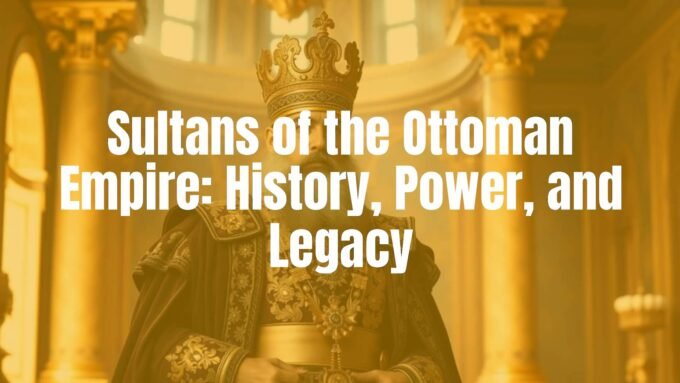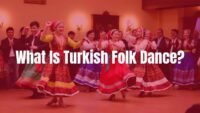In Turkish culture, the evil eye, called “nazar,” is more than a simple superstition. It is a long-held belief that shapes daily habits and social behavior. The evil eye is thought to be a harmful look, often caused by jealousy, that can bring bad luck, illness, or damage to a person or their belongings. People in Turkey try to block this harm using different protections, the most common being the blue eye-shaped charm called the Nazar Boncuğu. This amulet is meant to push away bad looks and negative energy.
At its core, the evil eye reflects human feelings like envy and jealousy. Someone may give a strong look-sometimes without meaning to-that is believed to cause real problems: a person might get sick, a car might break down, or a business might face sudden trouble. Because of this fear, many customs and symbols have developed in Turkey to keep this hidden danger away.

What Does the Evil Eye Symbolize in Turkish Culture?
In Turkey, the evil eye mainly stands for the harm that envy and jealousy can cause. A person’s admiring or jealous gaze-intentional or not-is believed to affect others, their family, or their things. This is why protective charms appear everywhere, from tiny trinkets to large displays in homes and shops. The evil eye reminds people that good fortune can be fragile and that care is needed against unseen negativity.
The idea goes beyond simple bad luck. It suggests that success, beauty, and happiness can be weakened by others’ envy. When something goes wrong, people often say “Nazar değdi” (the Nazar touched him), showing how deeply this belief is part of language and culture. It also reflects the idea that even kind praise might carry a hint of envy and may need to be balanced with protective words or actions.
Origins and Historical Roots of the Evil Eye Belief
The belief in the evil eye is thousands of years old, with early roots in ancient Mesopotamia. It spread through many cultures, including the Assyrians, Phoenicians, Celts, Greek-speaking peoples, Romans, and later Jewish, Christian, and Muslim societies. A Sumerian cuneiform text even mentions using water to fight its effects. One Mesopotamian text describes the “eye ad-gir” as a force that could harm people and bring storms.
The exact starting point is unclear, but references appear in ancient Greek and Roman sources and as early as the Ugaritic texts of the Late Bronze Age. Many ancient peoples believed the evil eye could harm humans, animals, and crops. Egyptians focused heavily on eye symbols; they used Kohl makeup against spirits and painted the Eye of Horus for protection. Ancient Greeks painted eyes on ships to keep them safe at sea. Turkic groups, who moved through Central Asia before settling in Anatolia, likely blended older practices from many places and adopted the evil eye into their own culture.
What Is Nazar Boncuğu and Its Meaning?
The Nazar Boncuğu-often called “the evil eye” in English-is actually the charm that protects against the evil eye. “Nazar” comes from Arabic for “look,” and “boncuk” means “bead” or “pearl,” giving the idea of “the bead of the look.” This handmade glass pendant is usually blue and shaped like an eye. It is common across Turkey and also seen in places like Armenia, Iran, and Greece. Many people believe it absorbs bad energy and shields the wearer from jealous looks.
Unlike the evil eye itself, the Nazar Boncuğu is a sign of safety and good luck. It is a way to guard against envy before it causes harm. You can see it on doors, in offices, on jewelry, and even built into walls. It is more than decoration; many view it as a quiet guardian against ill will.
Physical Description and Symbolism
A typical Nazar Boncuğu is handmade glass with rings of color or a teardrop shape. Most have a dark blue ring, then white, light blue, and a black center dot, forming an eye. Sometimes there is a yellow or gold edge. Each part is thought to add to its protective effect.
The eye shape is key. Many believe that an “eye” can reflect or absorb another eye’s gaze. Dark blue is seen as a strong shield that soaks up negativity. Light blue is linked to the sky and truth, offering direct protection. Together, the shape and colors act as a visual warning to any harmful look.

| Element | Meaning/Role |
|---|---|
| Dark blue ring | Absorbs bad energy; general protection |
| White ring | Clarity and balance |
| Light blue ring | Sky, truth, direct shield |
| Black center | Focus of the “eye” that counters the gaze |
| Yellow/gold edge (sometimes) | Extra brightness and attention-catching |
Why Is Nazar Boncuğu Traditionally Blue?
The blue color has deep roots. In older beliefs around the Mediterranean and Middle East, people with light eyes-especially blue-were sometimes feared for their supposed power to harm with a look. This idea led to blue eye charms in very early times, including among the Assyrians.
Blue also held special meaning in Byzantine culture, where it stood for heaven and water, the sacred and the endless. It suggested peace and calm and was linked to the imperial color. This love of blue carried into Ottoman art, such as Iznik tiles and the famous Blue Mosque. Even today, many people in the Aegean region believe blue brings good luck. That is why house doors and church roofs on some Greek islands are painted blue. The Nazar Boncuğu’s blue color brings together these old protective ideas and holy meanings.
Use of Nazar Boncuğu as Gifts and Decorations
The Nazar Boncuğu is a common personal charm, a favorite gift, and a well-loved decoration in Turkey. People give it to share wishes for safety and luck. Grandmothers often pin one on a grandchild’s clothing. Shopkeepers may slip a small bead into a purchase as a kind gesture, making it a popular keepsake from Turkey.
These blue eyes appear in many places: on front doors, in offices, on rearview mirrors in taxis and buses, set into building walls, and even hanging from trees in places like Cappadocia. They are both pretty to look at and meant to guard homes, businesses, and vehicles from bad looks and bad luck.
Which Items and Symbols Are Used to Ward off the Evil Eye in Turkey?
Turkey has many objects and signs believed to block or weaken the evil eye. The Nazar Boncuğu is the most famous, but there are many others, each with its own story and meaning. All aim to protect people from jealous glances and the trouble they may bring.
These charms are not old relics tucked away in museums. People use them daily-in what they wear, what they hang in their homes, and what they give as gifts-showing a steady belief that unseen forces can affect well-being.
Popular Amulets: Nazar Boncuğu, Hamsa, and Red Ribbons
The most common amulets include:
- Nazar Boncuğu: The blue eye bead is everywhere in Turkey. Many believe it takes in negative energy sent by envy. If it breaks or cracks, people say it has done its job and needs replacing.
- Hamsa (Hand of Fatima/Hand of Myriam): An open hand with five fingers, often with an eye in the center. It is used across North Africa and the Middle East. In Muslim tradition it can honor Fatima-Zahra, and in Jewish tradition it is linked to Myriam. The five fingers are often tied to the five pillars of Islam.
- Red ribbons: Bright red bands tied on children’s wrists, on brides’ waists, or onto valuable items like coins or jewelry. The vivid color is believed to draw the evil eye away from the person or object, acting like a decoy.

Evil Eye Motifs in Turkish Rugs and Art
The idea of protection also appears in Turkish rugs and textiles. Many old patterns were created to push away the evil eye. While people today may admire these rugs for their beauty, the designs once carried a protective purpose.
Common symbols include:
- Diamond shapes (sometimes nested), linked to the evil eye and its deflection
- Çengel (hook), thought to “catch” and break the evil eye
- Muska (triangle), a symbol of a protective charm
- Pıtrak (burdock), a plant that clings, symbolizing capture of harm
- Haç (cross), used to split the evil eye into four and weaken it
Religious Protections: Muska and Quranic Verses
Religious items also play an important part in protection. A common one is the muska: a small, triangle-shaped leather pouch worn as a necklace. Inside are folded verses from the Quran. Many believe these words create a strong spiritual shield against bad forces, including the evil eye.
People also hang cards or plaques with Quranic verses on walls at home, in workplaces, and above doors. These are seen as a steady call for God’s protection-words meant to keep harm away and bring blessings. This mix of folk practice and faith shows how many Turks combine different methods to stay safe from nazar.
How Does the Evil Eye Influence Turkish Daily Life?
The idea of the evil eye still affects everyday life in Turkey. It guides how people give compliments, celebrate happy events, and look after family and possessions. Many people watch what they say or do so they do not draw unwanted attention.
From a baby’s birth to buying a new house or car, the risk of nazar is kept in mind. This mindset builds shared habits that aim to protect both oneself and others from possible harm.
Common Situations Where the Evil Eye Is Feared
People worry about nazar in many moments, especially when something is new, beautiful, or successful. Examples include:
- Newborn babies and young children
- New cars, homes, or businesses
- Personal achievements and public praise
- Physical beauty and frequent compliments

Too much admiration is seen as risky if it is not balanced with protective words or charms. Many avoid showing off success, preferring a quieter style to reduce attention from envious eyes.
Social Customs Surrounding the Evil Eye
This belief has shaped many social habits. Compliments are often softened with protective phrases. Sometimes people use playful “reverse” compliments, like calling a cute child “çirkin” (ugly) or “cadı” (witch) in a loving way, to confuse the evil eye.
Another habit is spitting or making a soft spitting sound, often three times, after admiring someone or something. If a Nazar Boncuğu breaks, most people take it as a sign it absorbed a strong hit of nazar and should be replaced quickly.
What Turkish Words and Phrases Relate to the Evil Eye?
Turkish has many common words and phrases linked to nazar. People use them daily to show concern, ask for protection, or balance praise. These sayings act like verbal shields and often come out almost without thinking.
They are part of a shared way of speaking that many believe helps keep bad luck at bay, alongside physical charms like the Nazar Boncuğu.
Frequently Used Protective Expressions
People use several expressions to push away the evil eye, especially during compliments or while talking about possible troubles.
“Maşallah”
“Maşallah” comes from Arabic and means “What God has willed.” It is said when praising someone or admiring something. By saying it, the speaker gives credit to God’s will, which is believed to block envy. You can also see “Maşallah” written on buildings and vehicles as a public call for protection against harm.
“Allah korusun!”
“Allah korusun!” means “May God protect!” People say it when talking about risks like accidents or illness. It appears on signs in homes, in workplaces, and on bumper stickers, serving as a short prayer for safety from all kinds of harm, including nazar.
Cultural Practices: How Do Turks Protect Themselves from the Evil Eye?
Beyond charms and phrases, many behaviors aim to guard people and their belongings from nazar. Families teach these habits early, and they become part of everyday life.
These actions try to draw attention away from possible targets or to weaken any harm before it starts. They show a shared effort to build a layer of protection around people and places.
Avoiding Excessive Praise or Staring
People often avoid over-the-top praise or long stares, especially at children or valuable items. Strong attention may invite nazar. Instead, compliments may be gentle, indirect, or mixed with protective words.
Long, open admiration-like staring at a baby or someone’s new car-can feel unwelcome. Many choose a more reserved way to show appreciation. This is not a lack of joy; it is a careful way to keep the person or object safe.
Spitting or Making Spitting Sounds
A well-known habit is to spit lightly or make a soft spitting sound three times after a compliment. People do this most often with babies or when seeing something new and lovely. The act is meant to push away any envy that may come with praise.
This is not meant as an insult. It is a quick, caring gesture that many see as protective. You might see a grandmother do it after calling a child cute, or friends do it after admiring a new outfit.
Protective Measures for Children and Newborns
Babies are seen as especially open to nazar, so families use extra steps to protect them. A small Nazar Boncuğu is often pinned to clothing, a cradle, or a stroller to act as a shield.
People may also use playful negative words with a loving tone, tie red ribbons on a child’s wrist, and avoid intense staring or heavy praise. These habits reflect a deep wish to keep the youngest safe from harm caused by envy.














Leave a comment